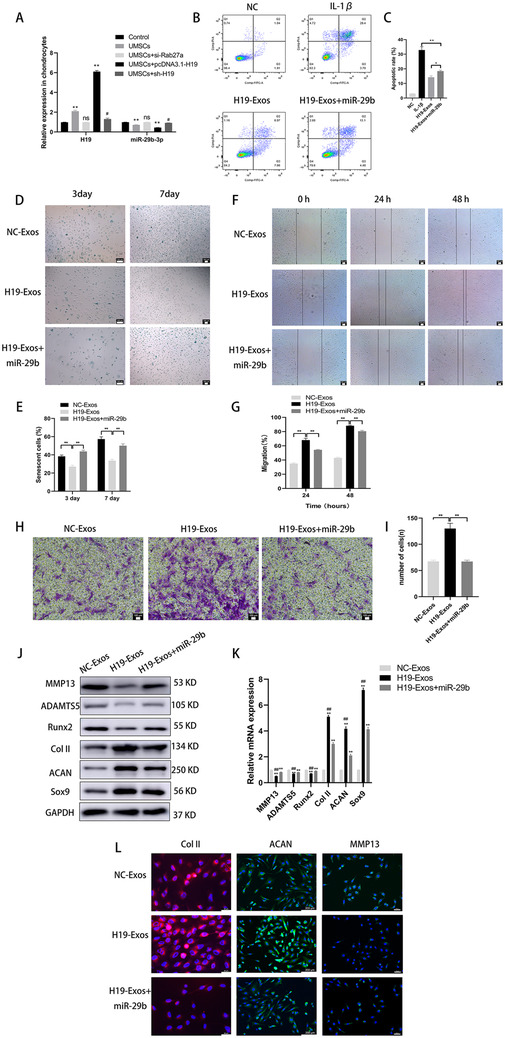FIGURE 4.

UMSC‐derived exosomal lncRNA H19 potentiates osteochondral activity by directly inhibiting miR‐29b‐3p. A, Expression of lncRNA H19 and miR‐29b‐3p in chondrocytes, which were cocultured with UMSCs or UMSC‐derived exosomes treated with si‐Rab27a, or MSC‐derived exosomes overexpressing H19, or MSCs transfected with sh‐H19. *P < .05 and **P < .01 compared with the control group; # P < .05 compared with the UMSCs. B and C, Chondrocytes were treated with H19‐Exos with or without miR‐29b mimics and stimulated by IL‐1β (10 ng/mL) challenge for 24 hours. Apoptosis was assessed by flow cytometry. *P < .05, **P < .01. D and E, Light microscopy images and quantitative analysis of chondrocytes stained with the senescent marker SA‐β‐Gal in monolayer culture; scale bar: 100 μm. *P < .05, **P < .01. F and G, Light microscopy images and quantitative analysis of scratch wound assays. H and I, Light microscopy images and number of transmitted cells in the transwell migration assay. *P < .05, **P < .01. J and K, The protein and mRNA level of genes associated with chondrocytes (MMP13, ADAMTS5, Runx2, Col II, aggrecan, and Sox9). L, Immunofluorescence for MMP13, Col II, and aggrecan. The data are shown as mean ± SD (n = 3)
